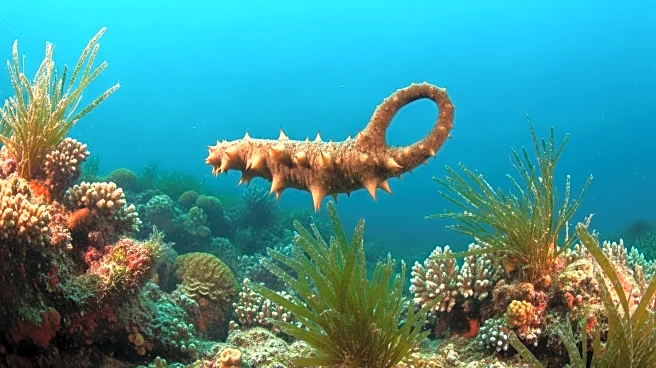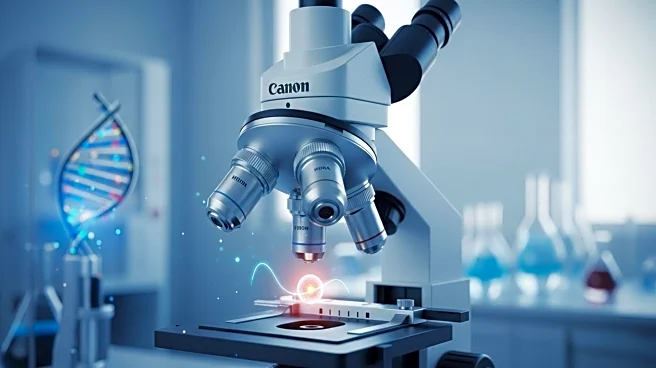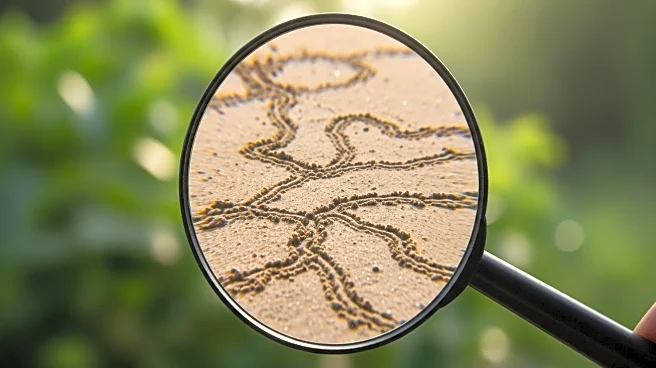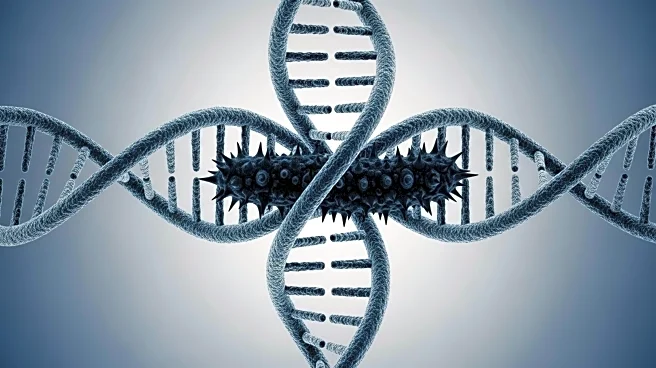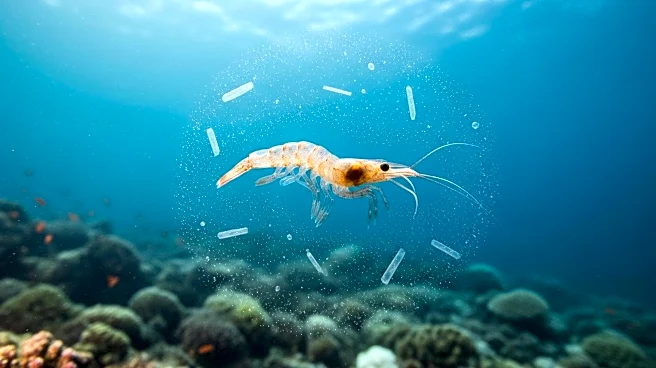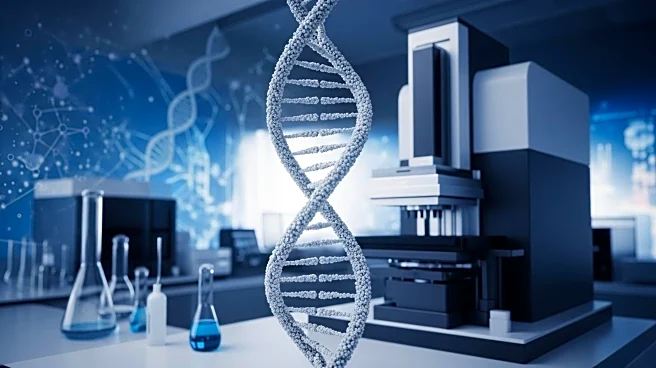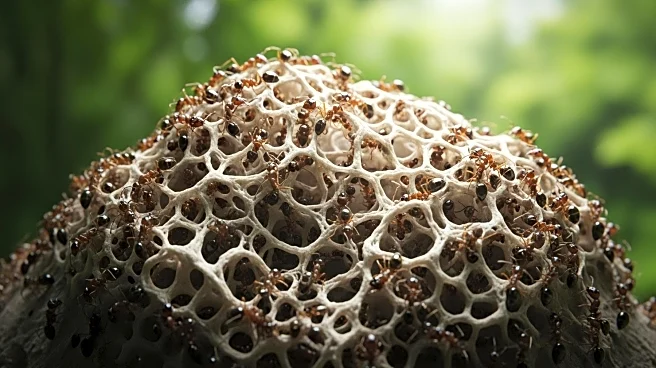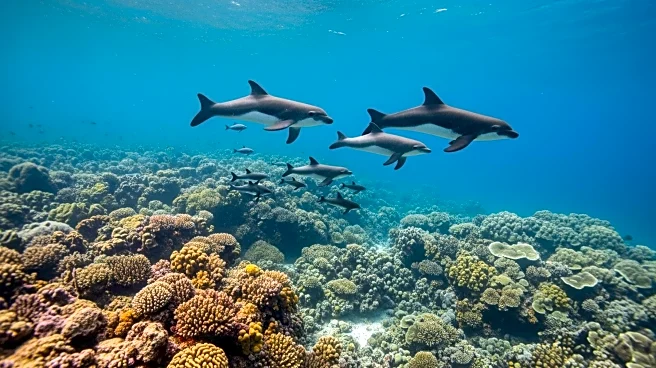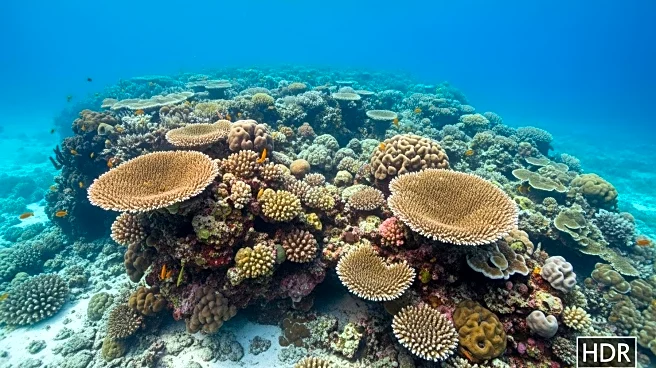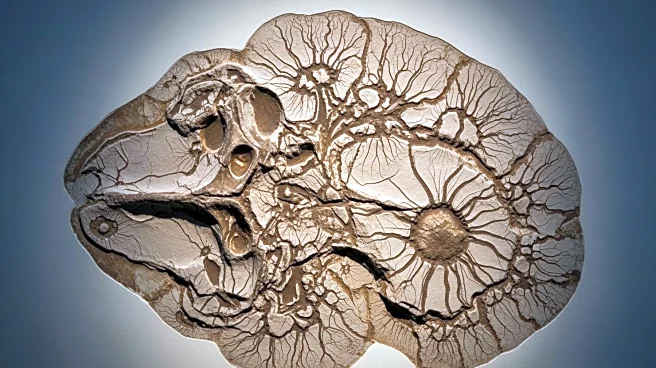What is the story about?
What's Happening?
Researchers have successfully completed a chromosome-level genome assembly of the sea cucumber Colochirus anceps, highlighting its ecological versatility and biomedical potential. The study involved collecting samples from various tissues of the sea cucumber, followed by next-generation sequencing, PacBio sequencing, and Hi-C sequencing. The genome assembly revealed a substantial size difference compared to related species, suggesting unique evolutionary trajectories. The genome is rich in repetitive sequences, with a high proportion of transposable elements. The sea cucumber is noted for its bioactive compounds, particularly holostane-type triterpene saponins, which have demonstrated significant anticancer activity. The species plays a crucial ecological role in nutrient recycling and sediment oxygenation, enhancing biodiversity in intertidal and seagrass ecosystems.
Why It's Important?
The genome assembly of Colochirus anceps is significant for both ecological and biomedical research. The discovery of potent bioactive compounds within the sea cucumber could lead to advancements in cancer treatment, offering new avenues for drug development. Ecologically, the species contributes to nutrient cycling and sediment oxygenation, which are vital for maintaining biodiversity in marine ecosystems. Understanding the genetic makeup of C. anceps can aid in conservation efforts and sustainable management of marine resources. The study also provides insights into the evolutionary processes that have shaped the genome architecture of sea cucumbers, potentially influencing future research in marine biology and genomics.
What's Next?
Future research may focus on exploring the full range of bioactive compounds present in Colochirus anceps and their potential applications in medicine. Additionally, conservationists and marine biologists might use the genomic data to develop strategies for preserving sea cucumber populations and their habitats. The findings could also prompt further studies into the ecological roles of sea cucumbers in different marine environments, potentially influencing policy decisions regarding marine conservation and resource management.
Beyond the Headlines
The genome assembly of Colochirus anceps raises ethical considerations regarding the exploitation of marine organisms for biomedical purposes. Balancing the potential benefits of drug development with the need for conservation is crucial. The study also highlights the importance of preserving biodiversity, as many marine species may hold untapped potential for scientific and medical advancements. Long-term, the research could lead to a deeper understanding of marine ecosystems and the genetic factors that contribute to their resilience and productivity.
AI Generated Content
Do you find this article useful?
